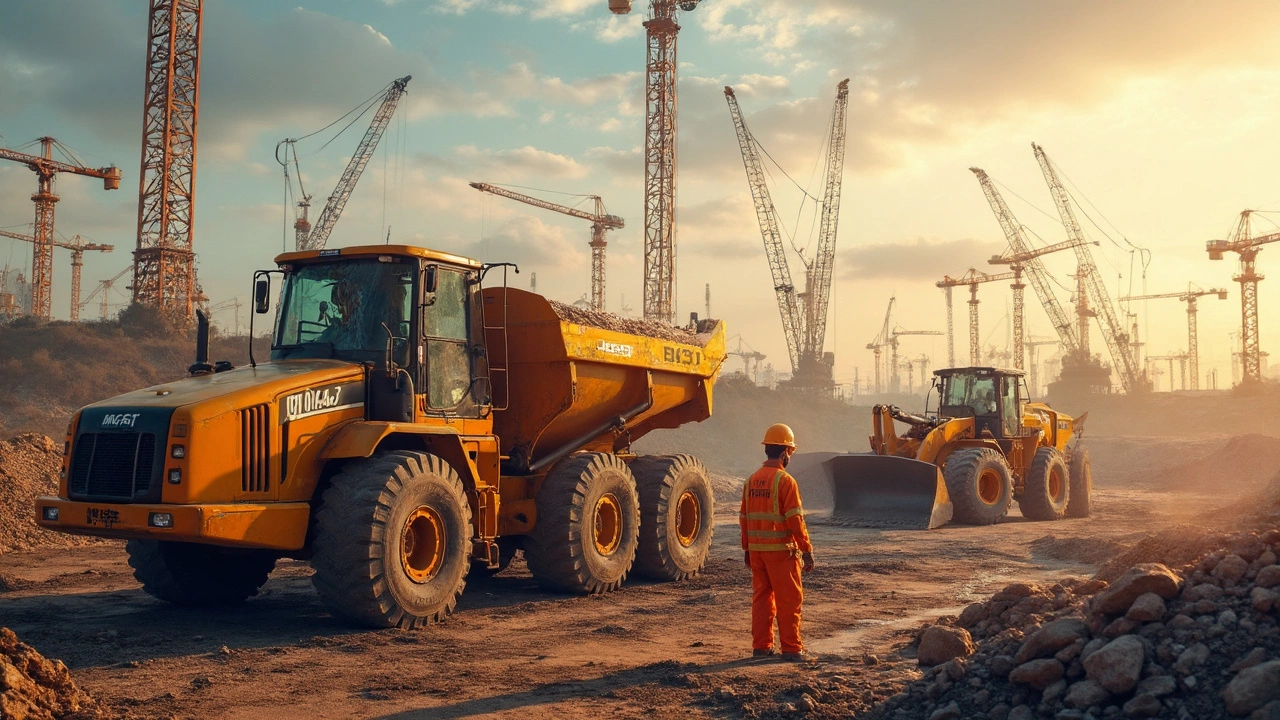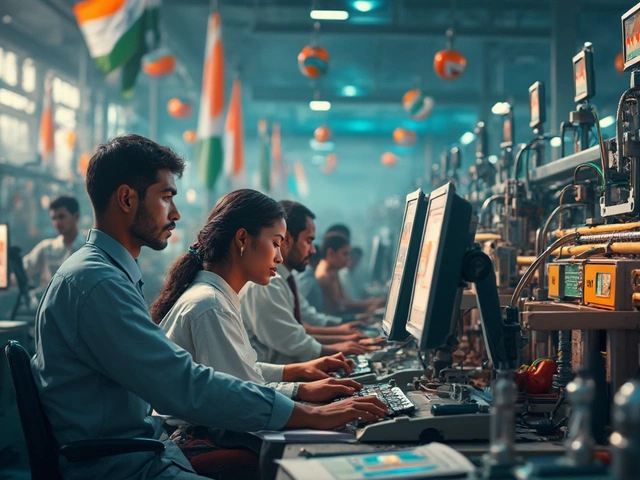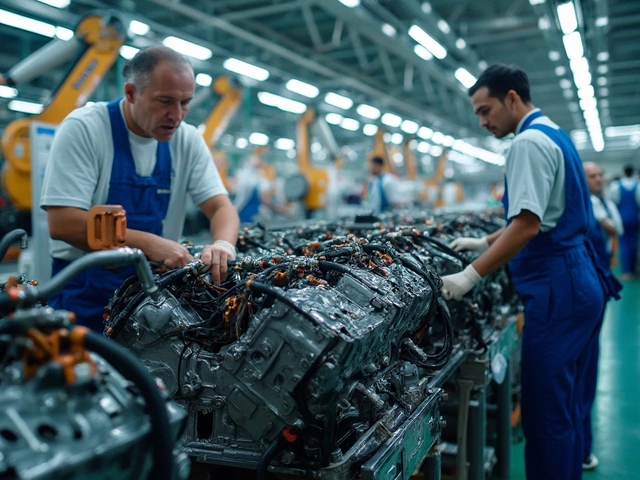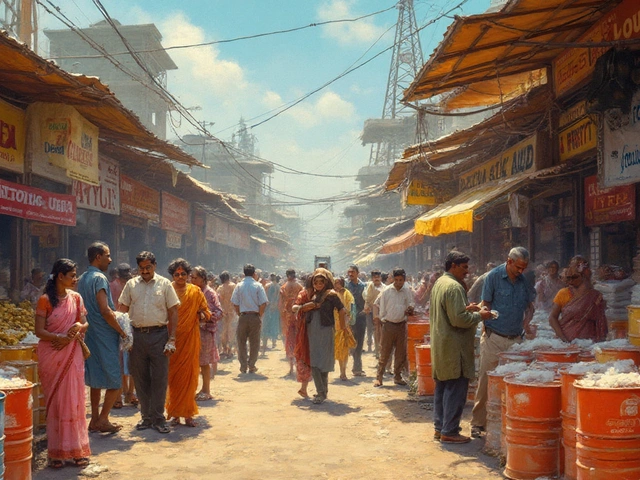If you want to know who runs the show when it comes to machinery manufacturing, it’s all about size, reach, and, yeah, some serious brand power. Think bulldozers, giant excavators, massive engines—machines you see on huge construction sites or mining pits. Globally, there’s no name bigger than Caterpillar. If you’ve ever spotted those big yellow machines chugging away like they own the place, that’s Cat, and it’s not just hype—they’re literally number one by sales, by size, and by global network. In 2024, Caterpillar clocked sales way past $67 billion. That’s more than the yearly budgets of some small countries!
But why should you care about the biggest manufacturer if you’re sizing up brands in India? Because the gap between a global juggernaut and a top Indian player says a lot about what each can offer. Whether you’re looking for something robust for a mega project or something affordable and easy to service, knowing who leads the pack helps you figure out where to start your hunt for the best gear. The world’s biggest names set the standard, but Indian manufacturers are catching up and have their own tricks—like offering machines that can handle rough local conditions and being faster with after-sales support.
- Meet the Global Giant: Who Dominates the Machinery World?
- How Indian Manufacturers Stack Up
- Key Differences Between Global and Indian Leaders
- Tips for Choosing the Right Machinery Partner
Meet the Global Giant: Who Dominates the Machinery World?
When you’re talking about the biggest machinery manufacturer, there’s no bigger name than Caterpillar. This American powerhouse is known for its wide range of heavy equipment—everything from road rollers to mining trucks. If you see something huge and yellow on a worksite, there's a good chance it’s theirs. In 2024, Caterpillar pulled in more than $67 billion in revenue, miles ahead of any other player in the game.
What makes Caterpillar stand out isn’t just the range of machines, but their crazy reach. With more than 150 dealers worldwide and a solid service network, they’re basically everywhere. Their machines are used on almost every continent, working in extremes from icy Siberia to the deserts of Australia. That’s real global domination.
| Manufacturer | 2024 Revenue (USD) | Headquarters |
|---|---|---|
| Caterpillar | $67.1 billion | USA |
| Komatsu | $29.8 billion | Japan |
| Volvo Group | $22.4 billion | Sweden |
Why does this matter? Because when a machine maker dominates like this, it usually means a few things: more innovative tech, reliable parts, and tons of experience. That’s important if you need equipment that just works or support that doesn’t leave you hanging.
According to Forbes, “Caterpillar isn’t just a brand, it’s the backbone of heavy industry worldwide.”
Caterpillar also spends billions on research and development. That’s why you’ll find their engines lasting longer, their machines burning less fuel, and new tech helping operators work smarter. While the initial sticker price looks steep, the long-term payback often makes up for it.
- Global footprint: Over 190 countries served
- Products: Excavators, bulldozers, cranes, engines, and more
- Support: 24/7 service in most regions
If you’re sizing up machinery, knowing where Caterpillar sits on the map gives you a touchstone for quality, reach, and what you can (or maybe can’t) expect from other brands.
How Indian Manufacturers Stack Up
Now, if you’re checking out the machinery scene in India, you’ll find some heavy hitters doing solid work—especially when you line them up next to global machines. Here, it’s not just about the biggest names worldwide but about companies that really know Indian conditions. The biggest machinery manufacturer in India by reputation and sales is Larsen & Toubro (L&T). They don’t just make machines—they customize them for stuff like unpredictable weather, dusty job sites, and local fuel quality.
Alongside L&T, there’s Tata Hitachi, known for making tough excavators and loaders that run for years without major fuss. BEML Limited is another big one, especially for mining, defense, and rail. These companies are in a league of their own locally, but they’re also exporting to markets in Asia and Africa, which is honestly a big deal.
| Company | Main Products | Annual Revenue (₹ Crore) | Notes |
|---|---|---|---|
| Larsen & Toubro (L&T) | Excavators, loaders, road machinery | ~25,500 | Biggest Indian brand, tech tie-ups |
| Tata Hitachi | Excavators, backhoe loaders | ~3,800 | Strong dealer network |
| BEML Limited | Mining, defense, construction equipment | ~5,000 | Govt. owned, major exporter |
| JCB India | Backhoe loaders, compact equipment | ~10,000 | UK parent, massive Indian plant |
Plenty of buyers like to go with Indian brands for a simple reason—service and spare parts are just way quicker and cheaper. When a machine breaks down here, waiting for imported parts from somewhere in Europe or the US isn’t ideal. Local players have warehouses and service centers in every big city, and even in some small towns. Plus, their machines are built with Indian operators in mind—features are simpler and repairs can often be sorted by your local mechanic.
If you’re thinking about exports, you should know that India is quickly becoming a global hub. Around 30% of the backhoe loaders sold by JCB come straight out of its massive plant in Pune. That’s a big step up from just supplying the local market.
So, while they don’t match global giants in overall revenue, Indian machinery manufacturers punch well above their weight by nailing the stuff that matters here—affordability, ruggedness, and real support on the ground.

Key Differences Between Global and Indian Leaders
Looking at machinery manufacturing, the gap between global giants and Indian leaders stands out right away. The main global players, like Caterpillar and Komatsu, run huge international operations in over 180 countries. These companies have massive research budgets, which means their machines usually come with the latest tech—think advanced telematics, better fuel efficiency, and even remote diagnostics that let you spot problems before things break down. Caterpillar, for example, rolls out heavy equipment that’s tracked from factory to field by satellite, and they have a pipeline of patents that most competitors envy.
Now, Indian manufacturers bring something different to the table. Companies like Larsen & Toubro (L&T), Bharat Earth Movers Limited (BEML), and Escorts focus hard on value for money, support for local industries, and machines built for Indian conditions. They know the roads can be rough, fuels might not always be top grade, and users need sturdy gear more than high-end gadgets. So, their machines tend to be simpler to fix, cheaper to maintain, and reliable in hot, dusty environments.
- biggest machinery manufacturer: Global leaders make headlines for sheer size—Caterpillar sells billions every year, while even the top Indian brands usually stay in the lower billions or high millions range.
- Technology: Expect more automation, better emission standards, and real-time data tracking from US, Japanese, or German brands. Indian leaders offer robust tech but tend to focus on practical upgrades that don’t drive up costs.
- After-sales support: Indian manufacturers score big here. Getting spare parts or service from a local dealer is usually faster and cheaper.
- Choice: Global giants have every machine you could think of, from tiny mini-excavators to mining dump trucks that need two lanes to turn around. Indian brands center on what the home market buys most—tractors, earthmovers, backhoe loaders and cranes.
If you’re choosing between them, ask what matters most—cutting-edge features, worldwide presence, or machines that just keep going even when things get tough. The good part? Indian companies are catching up every year, teaming up with global brands for tech partnerships and starting to export more. So, the gap’s getting smaller, and there’s more choice than ever.
Tips for Choosing the Right Machinery Partner
Picking a machinery manufacturer isn’t about flashy ads or the biggest logo on a hard hat. It’s about finding someone who fits with your business goals, delivers on time, and keeps production running smooth. Here’s what really matters when you’re about to make a major investment in equipment, whether you’re eyeing the biggest machinery manufacturer like Caterpillar or a fast-growing Indian player like Larsen & Toubro or Bharat Heavy Electricals Limited (BHEL).
Start with these basics:
- Track Record: Look for brands with a strong history. Caterpillar’s been around since 1925, while BHEL started in 1964 and L&T has roots dating back to 1938. A proven record means they probably know how to handle the bumps in the road.
- Product Range: If you need everything—from dump trucks to cranes—choose a partner with a wide offering. Some Indian companies focus on niches (like Escorts with tractors), while others like L&T and Tata Hitachi cover construction to mining equipment.
- After-Sales Support: Downtime is money lost. Ask about service centers, spare parts availability, and support response times. For example, BHEL runs more than 17 regional offices and service centers across India.
- Pricing vs. Value: Cheaper isn’t always better. Sometimes imported brands cost more but last longer. Indian manufacturers often win on maintenance costs and faster support—key if you’re running 24/7 shifts.
- References and Case Studies: Don’t just take their word for it. See which big projects have used their machines. Indian Railways and NTPC depend on BHEL turbines; Delhi Metro has used L&T equipment.
It helps to check real numbers before deciding. Here’s a quick stat table:
| Company | Founded | Headquarters | 2024 Revenue (USD) | Global Presence |
|---|---|---|---|---|
| Caterpillar | 1925 | USA | $67B+ | Over 190 countries |
| Larsen & Toubro | 1938 | India | $23B | Over 50 countries |
| BHEL | 1964 | India | $3.5B | 80+ countries |
| Tata Hitachi | 1999 | India | $1B+ | 20+ countries |
Finally, get on-site demos if possible. Nothing beats seeing how the machine handles Indian dust, unpredictable loads, and the occasional monsoon. It’s about getting what suits your environment and your bottom line, while knowing help isn’t far when things grind to a halt.






